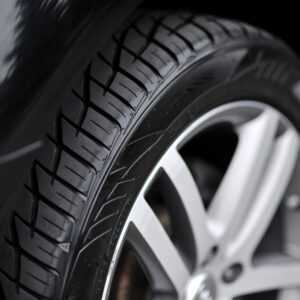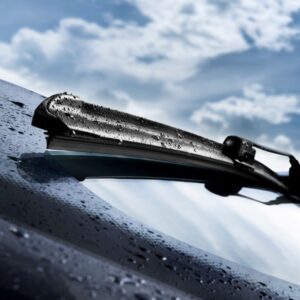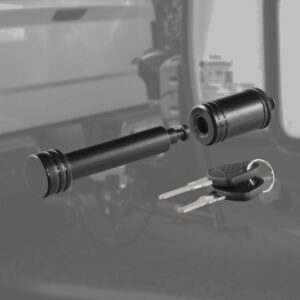At first, U-turns seem simple–until the time comes to perform one. Then you realize that the maneuver often cuts across multiple lanes used by other vehicles. Thus, U-turns are usually only allowed in specific areas and situations. Let’s look at what legal U-turns are, how they differ from illegal U-turns, and how to perform a legal U-turn safely.
When Are U-Turns Legal?
The exact rules vary between states. It’s a good idea to brush up on your home state’s traffic code and research the laws in any state that you plan to drive to.
However, there are some general rules on U-turns that apply in most or all states. If you ask “When are U-turns legal?”, the following can answer your question:
No Warning Against U-Turns
Always look for a “No U-turn” sign. These warning signs are usually nearby and prominently positioned for easy viewing. If you don’t see anything that prohibits making U-turns, you can usually do legal U-turns.
Green Light/Left Turn Arrow
Traffic lights tell you when to stop and go at an intersection. They also indicate if it’s legal to make a U-turn.
Is the traffic light green? If the answer is yes, you can make a legal U-turn. However, some situations prohibit U-turns even when the light or arrow turns green. Consult state and local laws on the legality of U-turns in front of a green light.
In The Far Left Lane
Are you driving on the far left lane of a multi-lane road? If you’re in that lane, you can make a legal U-turn to the lane on the left.
“U-Turn Only” Sign
Nothing says “You can make a legal U-turn here” like a sign with exactly that written on it. A “U-turn only” sign restricts an area for the maneuver. If you’re not there to make a U-turn, you should go elsewhere.
Residential Streets
The roads and streets in residential areas are some of the best places to make a U-turn. They’re usually in good condition and have sparse traffic flow. If you’re on a residential street and have no other vehicles going your way, you are allowed to perform a U-turn. Look out for pedestrians or pets, though.
Unrestricted Opening in the Highway’s Center Divider
Some highways have physical dividers running through their center. Every now and then, a gap appears in the center divider. The opening allows vehicles to make legal U-turns on highways.
Look for warning signs that say the center divider opening is only for emergency and police vehicles. If you spot such a sign, pass by the opening and keep looking for another one.
U-Turn Pass-Throughs
The street equivalent of the highway’s center divider opening is the U-turn pass-through. Found in cities like Detroit, MI, U-turn pass-throughs allow drivers to make a U-turn followed by a right-hand turn.
Left-Hand Turn Lanes
You can also make a U-turn on a left-hand turn lane at the intersection. The lane has a dedicated signal light to guide drivers.
Before making a U-turn at a left-hand turn lane, look for any “no U-turn” signs or warnings. If you don’t see any, you’re clear to make a legal U-turn when the signal light turns green.
When Are U-Turns Illegal?
Here are the factors that determine if it’s illegal to make a U-turn in the area:
Left-Hand Turn Lanes With “No U-turn” Sign
While many left-hand turn lanes allow U-turns, others are only for left turns. These turn lanes put up prominent “no U-turn” signs to guide drivers. If you see the warning sign, either content yourself with a left turn or find another place that lets you make U-turns.
Red Light
Never make a U-turn when the traffic light or turn left light glows red. A red light means stop, and you’ll break the law if you try to go for a U-turn.
Three-Lane Roads
The middle lane of a three-lane road is intended for left-hand turns. Many drivers take advantage of the turn lane to make a U-turn. However, that practice isn’t legal or safe, so avoid making U-turns on three-lane roads.
Divided Highway Pull-Offs
Have you noticed the road sections that connect the lanes of divided highways? They seem like logical places to make a U-turn. However, it’s illegal to use them that way. They’re called pull-offs and are limited to emergency vehicles.
Double Yellow Lines in Residential Areas
Many states draw two parallel yellow lines between two lanes on multilane roads. In some states, a black line runs between the yellow lines to increase their visibility. Double yellow lines indicate two-direction traffic on the separated lanes. Furthermore, the markings forbid drivers from crossing the lines to pass slower vehicles ahead of them. That includes U-turns.
If the double yellow lines are on a residential street, you usually can make a legal U-turn. However, the right of way always goes to opposing traffic, so beware of other vehicles.
Other Areas Where U-Turns Are Illegal
- Heavily-used pedestrian crossings, railroad crossings, school zones, and other areas with other forms of traffic
- Business districts except at intersections and in areas with visible markings that permit U-turns
- Cramped and obstructed areas that hinder motorists from seeing approaching vehicles and traffic
- Crosswalks with people using them
- One-way streets
- Highways and divided roadways
- The area in front of a fire station
Tips On How To Make A U-Turn
Observe your surroundings. The nearest moving vehicles should be at least 200 feet away. If there’s a crosswalk, ensure the path is empty.
Activate the left turn signal before moving forward while keeping your foot on the brake pedal. Stay in the right side of your lane as you get ready to turn left. Once your vehicle clears the divider or meridian, turn the steering wheel to the left as far as possible.
Apply the brake as you start the U-turn. You can go slightly faster once you begin to leave the maneuver. Finish the U-turn before returning to typical road speeds.
Any information provided on this Website is for informational purposes only and is not intended to replace consultation with a professional mechanic. The accuracy and timeliness of the information may change from the time of publication.

























